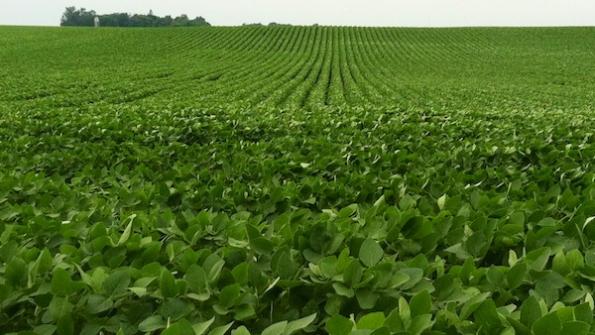February 19, 2014

Rabobank has released a 2014 outlook for Brazil’s crop production. They say another record year is ahead for major crops in Brazil, including soybeans. However, Brazil commodity prices will not reach records, and could fall further in 2014, says the outlook.
Infrastructure and logistics remain key points of concern for Brazil for 2014, particularly for the export market. With production and export volumes set to rise again, and further increases in transport fuel costs implemented at the end of 2013, there is little chance of lower logistics costs in 2014.
“Due to slowing economic growth and high inflation in Brazil, the domestic market will have limited scope to drive growth in sales in 2014,” explained Rabobank analyst Andy Duff. “It is possible that some growth may come from exports, but with declining global commodity prices, revenue growth would have to come from an increase in export volumes, or a declining exchange rate, or both.”
Exports and infrastructure bottlenecks
In the case of soybeans, the outlook is an increase in export volumes in 2014. Brazil�’s soybean area in 2014 is estimated to be 7%, or 2 million hectares, up on area in 2013, as a result of favorable economics for soybeans vis-à-vis corn. If trend line yields are achieved, a harvest of 91 million tons is expected for the 2013-14 crop year, versus 81 million tons in 2012/13.
Brazil’s beef industry is also expecting 2014 to be another year of rising exports. With major competing exporters facing challenges in raising output, Brazil is well-placed to capitalize on growing import demand. The decline in the value of Brazil’s currency over the last year has also boosted the industry’s export competitiveness, and a further gradual decline in the BRL/USD exchange rate over 2014 is expected to sustain this competitive advantage.
Nevertheless, the positive impact of the weakening of the BRL/USD exchange rate on Brazil’s export competitiveness has been at least partially offset by rising costs, especially in services and logistics. For example, diesel prices have risen three times since the beginning of 2013, with the most recent hike of 8% at the end of November 2013, Given the long distances between major crop production regions and the country’s ports, sustained major investments in infrastructure over the coming years remain pivotal if the country is to continue to expand production and export volumes while remaining competitive.
“Although Brazil is slowly addressing its bottlenecks, this will take years,” notes Duff. “For 2014, with higher fuel costs and another large grain harvest, logistics costs for Brazilian agribusiness are unlikely to decline.”
You May Also Like




